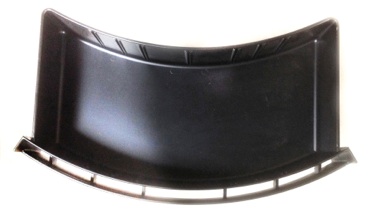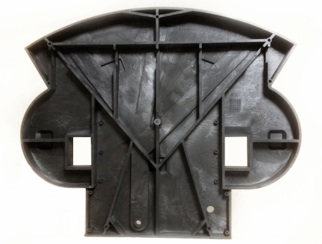Injection moulding
We receive synthetic material as little
beads, delivered by our suppliers, which go into a funnel above a
machine. The machine is equipped with a screw that turns the synthetic
beads inwards. In one of the machine’s cylinders, the beads are
heated until they become plastic. This mass is then injected into a
mould under high pressure until it takes the shape of the product. Now,
the mould is cooled so that the synthetic material thickens.
Then, the two parts of the mould open themselves and the formed product is pushed out of the mould. This cycle is repeated with which you can make small or large series. Since the production costs of moulds are high, the injection moulding technique is usually only used in relatively large numbers.





